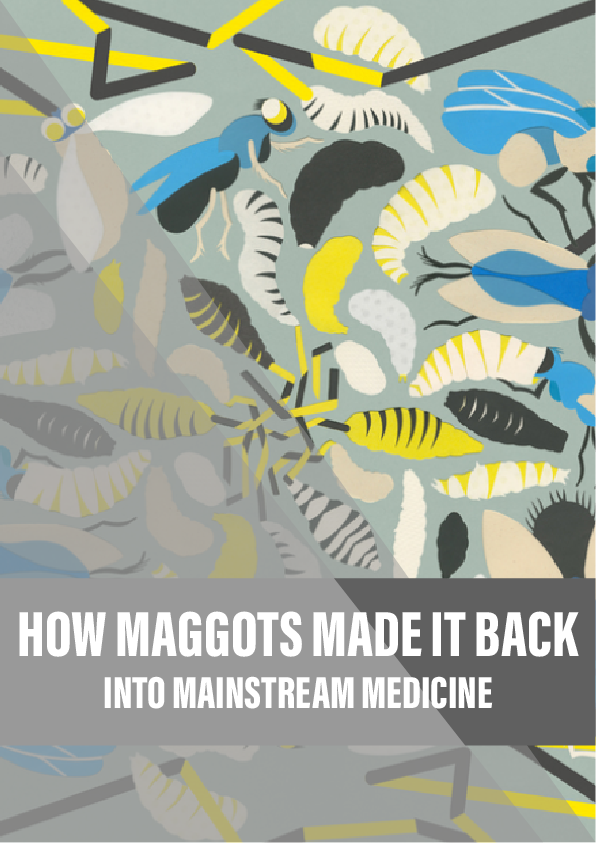A writhing mass of maggots in a wound might seem like a good reason to seek medical help. But, reports Carrie Arnold, sometimes it’s the doctors who have put them there, adopting an ancient treatment to help heal painful infected injuries.
By the time Michelle Marineau saw her patient, James*, there was little she could do to help him. His big toe had been removed, a complication from years of uncontrolled type 2 diabetes, but the amputation site had stubbornly refused to heal. An infection had eaten away flesh and left tendon and bone exposed, streaks of off-white against the angry, red, weeping wound. Several of his other toes had developed gangrene, turning black and slowly dropping off.
If unchecked, diabetes leads to damaged nerve endings, meaning small injuries can go unnoticed and turn into ulcers prone to life-threatening bacterial infections. The bacteria build a nearly impenetrable shield called a biofilm that protects them from antibiotics, so instead surgeons use scalpels to clear away dead tissue and infected flesh, a procedure known as sharp debridement. Unfortunately, this often misses spots, letting the infection come roaring back with an even larger area to colonise.
Marineau, a nurse practitioner and wound care specialist on Oahu, Hawaii, had seen many patients like James before and decided that he, like over 70,000 other people with diabetes in the US each year, needed to have his foot amputated in order to save his life.
Seeing his father’s distress at the looming procedure, James’s son proposed a different solution: maggots.
The larvae of the greenbottle blowfly (Lucilia sericata) feast on the bacteria and dead tissue in chronic wounds, cleaning out the wound and giving it more of a chance to heal. This is an ancient therapy, used since Biblical times, but fell out of favour with the invention of antibiotics. However, the rise of drug-resistant bacteria, combined with skyrocketing rates of chronic wounds from diabetes, has led to a resurgence of interest in using creepy-crawlies as treatment, usually referred to these days as maggot debridement therapy or larval therapy.
Although larval therapy had been studied in the lab, few clinical trials had tested it head-to-head against more modern surgical techniques. So although Marineau agreed to try the maggots, she had no idea whether they would actually work for James.
She also had no idea how to use maggots, and had to be talked through the procedure over the phone. But it worked perfectly: “We had amazing success with him,” she says. “We were just astounded.” Lots of medical products hype the wonders they can work for patients, but Marineau says maggots are one of the only things that “really blow your mind at what a big difference they can make”.
Reference:
- Linda Cowan’s clinical trial is ongoing.
- Results from previous trials in the UK (VenUS II) and France show that maggots are better at debriding wounds.











